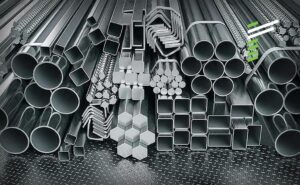In 2021, many manufacturers will be prioritising transformation.
The pandemic had a serious impact on this sector, which in turn affected the world in a real way; a notable example being the lack of medical equipment and essential items during the first few months of the pandemic.
Global manufacturing output fell by 11.2% in the second quarter of 2020 compared to the same quarter in 2019. The manufacturing industry is showing signs of recovery this year, but experts say that the world is waking up to the realisation that there are serious drawbacks to depending on a global web of “complex supply chains, the division of innovation and manufacturing, and just-in-time production”.
Companies across the globe are embracing transformation to keep their businesses alive and to future-proof themselves. According to a recent report, 92% of them are making it imperative to improve “operational efficiencies”; 67% are accelerating their investments in digital transformation.
Rising urgency for transformation
It is no surprise that digital transformation is a major focus for most manufacturing companies. Digitalisation enhances operational efficiency and fosters an environment for innovation.
The following trends have been gaining traction in the manufacturing sector for years, but in 2021 they will gain further attention:
1. Flexible manufacturing practices
The unpredictable and unprecedented events of 2020 forced the need for agility in operations. We expect to see an increased interest in Flexible Manufacturing Systems (FMS).
With FMS, manufacturers can configure their systems to easily produce a variety of parts and handle changing levels of production. This allows manufacturers to adapt to changes quickly, improve productivity and operational efficiency, and ultimately save time and reduce cost.
2. Digital twins
Remote working has turbocharged interest in digital twins. A digital twin is a virtual copy of a physical asset or product that collects real-time data which can be accessed anywhere and used to appraise and optimise performance.
For example, manufacturers can create digital twins of their supply chains or processes to monitor, test or improve them quickly and cost-effectively.
With 5G facilitating the Internet of Things (IOT), digital twin technology is set to be one of the big things in the fourth industrial revolution.
3. Big data and machine learning
The first industrial revolution was steam-power-driven, the second was electric, the third was computer and robotic, and the fourth is cyber physical systems.
With IOT, all assets can be networked and managed digitally. Autonomous vehicles and Radio Frequency Identification (RFID) tracking of goods will facilitate faster and more efficient supply chains.
Big data and machine learning will improve agile practices and predictive maintenance regimes. The list of changes goes on and on, but it’s crucial to not neglect the human factor in this process. We still need human intelligence to ensure that these systems are working as they should.
4. The digitally empowered workforce
In the third industrial revolution, the customer was king, but increasingly, leading manufacturing organisations are addressing not only customer experience, but employee experience as well.
The days are numbered for autocratic, top-down management structures. Having a digitally empowered workforce should, in theory, lead to faster and more effective decisions, further driving cost efficiencies and innovation.
How are companies going to gain this digitally empowered workforce? For some, it will involve investing in new talent. For others, they will have to upskill their workforce. For many, it will involve both.
The correct implementation is crucial
The year ahead will be one of transition, with different goals across different manufacturing companies. To face this storm of challenges, all should focus on increasing agility in operations and investment in digital initiatives.
However, while the trends highlighted above are important, it is crucial to remember that they are only half of the story. The other half is to build change capability within your organisation to implement transformation effectively and sustainably.
In our years of experience in executing agile manufacturing and digital transformation, one of the common problems we have seen is initiatives that do not address real business needs, also neglecting and the human factor when it comes to implementation. What can executives do to mitigate this?
1. Do the groundwork
To ensure that the transformation will meet business needs, manufacturers should work to:
- Differentiate perceived needs from real business needs
- Evaluate current company vision and whether it needs to be reworked
- Identify inefficiencies at all levels of the company
- Get clear on what benefits they’d like to get from the transformation
2. Utilise change management best practices
This means having a solid strategy to communicate the case for change to employees and getting them involved with the transformation from the beginning.
3. Embed a culture of continuous change
A culture of continuous change enables companies to pivot like a well-oiled machine when necessary. This capability will help companies thrive and become future-ready.
For more on implementing transformation successfully, download our white papers, Powering Successful Digital Transformation and Future-Ready, Agile Organisations: The Winning Blueprint for Change.)










